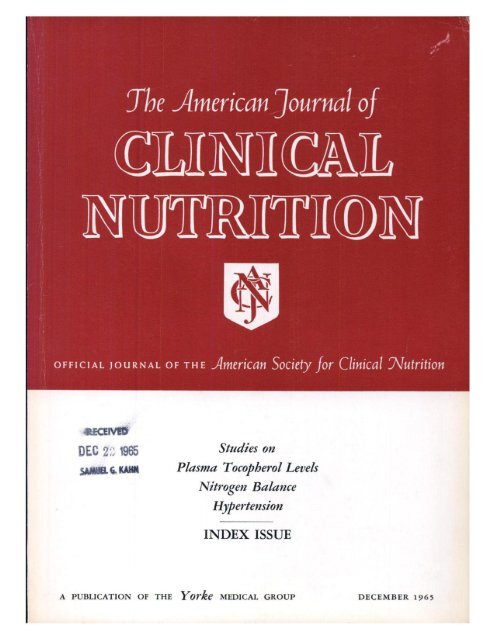与补充铁和叶酸相比,产前补充多种微量营养素对出生时大小和24月龄后生长的影响:一项系统回顾和荟萃分析。
IF 6.5
1区 医学
Q1 NUTRITION & DIETETICS
引用次数: 0
摘要
背景:与补充铁和叶酸(IFA)相比,产前补充多种微量营养素(MMS)可以改善妊娠结局,但对其对婴儿生长的影响知之甚少。目的:我们对比较母体MMS和IFA的试验进行了系统回顾,并评估了出生、3、6、12、18和24月龄时婴儿人体测量结果的影响。方法:我们纳入了Cochrane综述中的试验和通过3个数据库的系统文献检索确定的新研究。我们使用通用的反方差法计算95%置信区间(ci)的合并效应估计值,采用固定(初步分析)和随机效应,并评估亚组差异。结果:纳入的19项试验显示,与IFA相比,MMS在出生至6个月期间的长度和体重、出生至12个月的头围(HC)和3个月的中上臂围(MUAC)显著增加。服用MMS的孕妇所生的婴儿出生时更长(平均差异:0.05 cm;95% CI: 0.02, 0.08 cm),出生时身高年龄z评分较高(0.09;95% CI: 0.06, 0.12), 3个月(0.09;95% CI: 0.06, 0.12)和6个月(0.04;95% CI: 0.01, 0.07)。MMS导致6个月前体重-年龄z得分和hc -年龄z得分显著升高,3个月前体重-长度z得分和muac -年龄z得分显著升高。MMS降低了发育迟缓的风险(风险比[RR]: 0.86;95% CI: 0.82, 0.91),体重过轻(RR: 0.86;95% CI: 0.81, 0.90),小HC (RR: 0.84;95% CI: 0.79, 0.90)和低MUAC (RR: 0.90;95% CI: 0.82, 0.99)和消瘦(RR: 0.90;95% CI: 0.85, 0.96)。对于一些结果,产后继续MMS和低出生体重患病率较高的情况下,效果更大。结论:产前MMS可改善婴儿出生时的尺寸和6个月后的婴儿生长,但此后没有改善。这些结果强化了MMS的益处超越出生结果的证据。本研究在PROSPERO注册为CRD42024551864。本文章由计算机程序翻译,如有差异,请以英文原文为准。
Effect of prenatal multiple micronutrient supplementation compared with iron and folic acid supplementation on size at birth and subsequent growth through 24 mo of age: a systematic review and meta-analysis
Background
Prenatal multiple micronutrient supplementation (MMS), in comparison to iron and folic acid supplementation (IFA), improves pregnancy outcomes, but less is known about their effect on infant growth.
Objectives
We conducted a systematic review of trials comparing maternal MMS to IFA and assessed the effect on infants’ anthropometric outcomes at birth, 3, 6, 12, 18, and 24 mo of age.
Methods
We included trials from a Cochrane review and new studies identified through systematic literature searches in 3 databases. We calculated the pooled effect estimates with 95% confidence intervals (CIs) using a generic inverse variance method, with fixed (primary analysis) and random-effects, and assessed subgroup differences.
Results
The 19 included trials showed that MMS, compared to IFA, led to significantly greater length and weight from birth to 6 mo, head circumference (HC) from birth to 12 mo, and mid-upper arm circumference (MUAC) through 3 mo. Infants born to pregnant women consuming MMS were longer at birth (mean difference: 0.05 cm; 95% CI: 0.02, 0.08 cm) and had higher length-for-age z-score at birth (0.09; 95% CI: 0.06, 0.12), 3 mo (0.09; 95% CI: 0.06, 0.12), and 6 mo (0.04; 95% CI: 0.01, 0.07) of age but not thereafter. MMS resulted in significantly higher weight-for-age z-score and HC-for-age z-score until 6 mo and higher weight-for-length z-score and MUAC-for-age z-score until 3 mo. MMS reduced risk of stunting (risk ratio [RR]: 0.86; 95% CI: 0.82, 0.91), underweight (RR: 0.86; 95% CI: 0.81, 0.90), small HC (RR: 0.84; 95% CI: 0.79, 0.90), and low MUAC (RR: 0.90; 95% CI: 0.82, 0.99) at 3 mo and wasting (RR: 0.90; 95% CI: 0.85, 0.96) at birth. For some outcomes, effects were greater when MMS was continued postpartum and in settings with higher prevalence of low birthweight.
Conclusions
Prenatal MMS improves size at birth and subsequent infant growth through 6 mo of age but not thereafter. These results strengthen the evidence on MMS benefits beyond birth outcomes.
This study was registered in PROSPERO as CRD42024551864.
求助全文
通过发布文献求助,成功后即可免费获取论文全文。
去求助
来源期刊
CiteScore
12.40
自引率
4.20%
发文量
332
审稿时长
38 days
期刊介绍:
American Journal of Clinical Nutrition is recognized as the most highly rated peer-reviewed, primary research journal in nutrition and dietetics.It focuses on publishing the latest research on various topics in nutrition, including but not limited to obesity, vitamins and minerals, nutrition and disease, and energy metabolism.
Purpose:
The purpose of AJCN is to:
Publish original research studies relevant to human and clinical nutrition.
Consider well-controlled clinical studies describing scientific mechanisms, efficacy, and safety of dietary interventions in the context of disease prevention or health benefits.
Encourage public health and epidemiologic studies relevant to human nutrition.
Promote innovative investigations of nutritional questions employing epigenetic, genomic, proteomic, and metabolomic approaches.
Include solicited editorials, book reviews, solicited or unsolicited review articles, invited controversy position papers, and letters to the Editor related to prior AJCN articles.
Peer Review Process:
All submitted material with scientific content undergoes peer review by the Editors or their designees before acceptance for publication.

 求助内容:
求助内容: 应助结果提醒方式:
应助结果提醒方式:


